Mexico
Mexico (Spanish: México), the United Mexican States (Spanish: Estados Unidos Mexicanos), is a country in North America, between the United States of America to the north, and Guatemala and Belize to the southeast. Its coastlines include the Gulf of Mexico and Caribbean Sea to the east and the Pacific Ocean to the west.
- For other places with the same name, see Mexico (disambiguation).
Mexico is known for its cuisine, art, archaeology, pyramids, museums, haciendas, 9,600 km (6,000 miles) of shoreline, superb architecture, weather from snow-capped mountains in the Sierras to rainy jungles in the Southeast and desert in the Northwest, many golf courses and excellent fishing. The once poor nation is one of the Pacific Pumas, seeing significant economic growth and improved infrastructure in the last few decades.
Regions

| Baja California (Baja California, Baja California Sur) The vast western peninsula, stretching 1,200 km from Tijuana on the US border to Cabo in the south. A land of deserts and undiscovered beaches. One of the biggest whale migrations takes place here every year from December to April. Also includes the far-off-shore Guadalupe Island. |
| Northern Mexico (Chihuahua, Coahuila, Durango, Nuevo León, Sinaloa, Sonora, Tamaulipas) The expansive deserts and mountains of the border states; mostly ignored by tourists. Culturally and physically a world away from the tropical south. The bustling industrial city of Monterrey Mexico's 3rd largest and most affluent. Includes Copper Canyon, the country's only railroad passing through gorges and indigenous villages. |
| The Bajío (Aguascalientes, Guanajuato, Zacatecas, San Luis Potosí, Querétaro) The former colonial heartland, this is one of Mexico's most historic regions filled with well-preserved colonial towns that grew rich off silver mining. Includes San Miguel de Allende and Guanajuato amongst other lesser known towns. |
| Central Mexico (Hidalgo, Mexico City, Mexico State, Morelos, Puebla, Tlaxcala, Veracruz) Mexico City, always the political, cultural and economic center of the country with a sophisticated urban core and a huge urban sprawl surrounding it. Also includes the awesome ruins of Teotihuacan, the historic city of Puebla and Veracruz, one of the country's most overlooked regions. |
| Pacific Coast (Colima, Guerrero, Jalisco, Michoacan, Nayarit, Oaxaca) Tropical beaches on Mexico's southern coast; Jalisco the birthplace of mariachi and Tequila; Guadalajara, the nation's second largest city; and the Oaxacan highlands, famous for their distinct cuisine. |
| Yucatán Peninsula (Campeche, Chiapas, Quintana Roo, Tabasco, Yucatán) Jungle and impressive Mayan archaeological sites, along with the Caribbean and Gulf coast with well known resorts like Tulum and Cancun. The colonial city of Merida and the jungle ruins of Palenque. Geographically isolated from the rest of the country, part of Central America (the dividing line being the Isthmus of Tehuantepec), it is culturally closer to Guatemala and Belize than the rest of Mexico, where Mayan culture is very much alive. Also includes Chiapas. |
Cities

- 🌍 Mexico City - Capital of the Republic, one of the three largest cities in the world, and a sophisticated urban hub with a 700-year history. In Mexico City, you will find everything from parks, Aztec ruins, colonial architecture, museums, to nightlife and shopping.
- 🌍 Acapulco - A sophisticated urban beach setting known for its top-notch nightlife, elegant dining, and nightmarish traffic. Many of the older (pre-1990s) concrete structures have suffered tropical decay.
- 🌍 Cancún - One of the worlds most popular and famous beaches, known for its clear Caribbean waters, its lively party atmosphere, and its wealth of recreational facilities. During the U.S. college Spring Break (mid-Feb to the end of March) it is noted for drinking, sunburns, and debauchery.
- 🌍 Guadalajara - A traditional city, capital of Jalisco state, and the home of mariachi music and tequila. Guadalajara is blessed with perpetual spring weather and its colonial downtown is graceful and sophisticated.
- 🌍 Mazatlan - Lively Pacific coast town, Mazatlan is a shipping port, a transportation hub with ferries to Baja California, and a beach resort destination with miles of sandy shore. It is a popular U.S. college Spring Break destination due to its variety of affordable lodging options.
- 🌍 Monterrey - A large modern city that is the commercial and industrial hub of Northern Mexico. Monterrey enjoys a dry, mountainous setting and is known for its high-quality educational and transportation infrastructure.
- 🌍 San Luis Potosi - Located in central Mexico, a colonial city that was once an important silver producer, but today, relies on manufacturing for its economic base.
- 🌍 Taxco - In central Mexico west of Cuernavaca, this nice steep mountain town was once a major silver producer, and now has a strong place in the trade of decorative silver, from cheap fittings to the most elegant jewelry and elaborate castings.
- 🌍 Tijuana - Mexico's busiest border crossing for pedestrians and private vehicles, and a long-time bargain Mecca for southern Californians due to its proximity with San Diego.
Other destinations
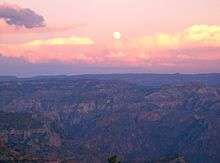
- 🌍 Copper Canyon (Barrancas del Cobre) - An exotic destination for travelers looking for a unique remote adventure! An awesome mountain rail ride -- one of the greatest in the world -- takes you upwards over 2,440 m (8000 feet) on the CHEPE, the Chihuahua al Pacifico Railway. Hiking, horseback riding, birding, and Tarahumara Indians. Copper Canyon, the Sierra Madre and the Chihuahuan desert of Mexico. This area is designed for adventurous individuals who will tolerate some rough travel to get to their point(s) of interest (although the famous train ride isn't demanding at all). Copper Canyon, a magnificent remote wilderness is not likely ever to become a mass market destination.
- Sea of Cortez - See whale birthings, swim with dolphins, and sea kayak in the warm waters of the Sea of Cortez, along the eastern coast of Baja California, near La Paz. And the sunsets at Puerto Peñasco and San Carlos are not to be missed.
- Monarch Butterfly Breeding Sites - Protected natural areas in the highlands of the state of Michoacán. Millions of butterflies come to the area between November and March of each year, although numbers have declined sharply.
- 🌍 Sumidero Canyon - From docks on the Rio Grijalva (the only major river within Mexico) near Tuxtla Gutiérrez in Chiapas state, tour launches take you into this steep-walled National Park. You'll likely see vast flocks of flamingos, pelicans, and other waterfowl, as well as crocodiles.
Archaeological sites
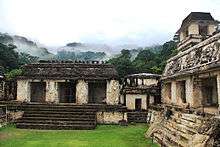
- 🌍 Chichen Itza - Majestic Mayan city, declared a UNESCO World Heritage Site in 1988 and was voted as one of the New Seven Wonders of the World.
- 🌍 Ek Balam - A reconstructed Mayan site, famous for its unique decorated stucco and stone carved temples that you can climb.
- 🌍 El Tajín - In the state of Veracruz near the town of Papantla. A UNESCO World Heritage Site.
- Plazuelas and Peralta - In the state of Guanajuato, two sites making part of the "Tradición él Bajío".
- 🌍 Monte Alban - In the state of Oaxaca, a Zapotec site dating from about 500 BC. A UNESCO World Heritage Site.
- 🌍 Palenque - Mayan city in the state of Chiapas, Palenque famous for its elaborate paintings. Also well known for having the largest tract of rainforest in Mexico located in the same area.
- 🌍 Teotihuacan - In the state of Mexico, near Mexico City. Enormous site with several large pyramids.
- 🌍 Tulum - Mayan coastal city with spectacular Caribbean vistas. Dates from late Mayan period.
- 🌍 Uxmal - Impressive Mayan city-state in the Puc Region, declared a UNESCO World Heritage Site in 1996.
Understand
Mexico is one of the most visited countries in the world. Much of the tourist industry is centered around the beach resorts as well as the altiplano in the central part of the country. Visiting the northern interior allows visitors to get off the beaten path a bit. U.S. American tourists tend to predominate on the Baja California peninsula and the more modernized beach resorts (Cancún, Puerto Vallarta), while European tourists congregate around the smaller resort areas in the south like Playa del Carmen and colonial towns San Cristobal de las Casas.
Climate
Mexico uses the metric system for all measurements. All weather forecasts are in Celsius (°C).
Varies from desert-like regions on the northwest part of the country (cities like Hermosillo, Ciudad Juárez, or Los Cabos), to temperate in the northeastern part (cities like Monterrey, Nuevo Laredo, Ciudad Acuña). But much of the northern Mexican territory gets rather cold during the winter with average day time highs from 8°C (39°F) to 12°C (59°F), overnight lows average around -4°C (24°F). Snow is sometimes frequent in certain northern places like (the Sierra Madre of Chihuahua, Durango, Coahuila, Nuevo León, and northern Tamaulipas), but can also occur at higher altitudes in the temperate forests in the central part of Mexico. Also, northern Mexico gets very hot during the summer with sudden violent storms in the afternoon, with heavy rain and hail, also an isolated tornado can occur with these storms but rarely, and the temperatures during the day can quickly exceed 39°C (100°F). The Bajío region is semiarid (cities like Aguascalientes, León and Zacatecas). There are temperate forests in the central part of the country (Mexico City, Toluca), and tropical rain forests in the south and southeast regions like (Chiapas, Cancún). The region stretching from Guadalajara to Morelia enjoys what many consider one of the best climates in the world, with daily high temps 21°C to 26°C (in the high 70s and 80s °F) year round. Hurricanes can be common in the coastal cities specially those near the Caribbean Sea and the Gulf of Mexico.
Landscape
High, rugged mountains; low coastal plains; high plateaus; temperate plains with grasslands and Mezquite trees in the northeast, desert and even more rugged mountains in the northwest, tropical rainforests in the south and southeast Chiapas, Yucatán Peninsula semiarid in places like Aguascalientes, San Luis Potosí and temperate coniferous and deciduous forests in the central part of the country Mexico City, Toluca.
Holidays
- January 1: New Year's Day
- January 6: The Three Wise Men day, celebrating arrival of the Three Wise Men to see and bring gifts to the baby Jesus (not an official holiday).
- February 2: The Candelaria Day ("Day of the candles"), celebrated in many places around the country (not an official holiday)
- February 5: Constitution Day (1917)
- February 24: Flag Day (not official)
- March 21: Birth of Benito Juárez (1806)
- April 30: Kid's Day
- May 1: Labor Day
- May 5: Cinco de Mayo, the Battle of Puebla against the French army, 19th century (not an official holiday)
- May 10: Mother's Day
- May 15: Teacher's Day
- September 1: Presidential Address Day
- September 15: Grito de Dolores
- September 16: Independence Day (celebrates the start of the fight for the independence from Spain in 1810, achieved until September 27, 1821)
- October 12: Day of the Race (not a public holiday)
- November 2: Day of the Dead (Día de Muertos) (not a public holiday)
- November 20: Mexican Revolution Day (1910)
- December 12: Virgin Mary of Guadalupe Day. Not a public holiday, but is one of the most important Mexican holidays
- December 24: Christmas Eve (not a public holiday, but normally a full non-working day)
- December 25: Christmas
- December 31: New Year’s Eve (not a public holiday, but normally a full non-working day)
Easter is widely observed nationwide, according to the yearly Catholic calendar (the first Sunday after the first full moon in Spring). Actual non-working days may shift to the Monday before the holiday, so check an up-to-date calendar. Visitors from the U.S. may be surprised to notice that the despite Cinco de Mayo being an important part of the cultural identity of Mexican-Americans, it is not regarded as a major holiday in Mexico, and hardly celebrated by Mexicans outside the state of Puebla.
Time
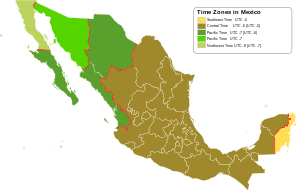
The 24-hour clock system is used for time keeping. Mexico uses the same four time zones as the contiguous United States, but three of them are only used in peripheral parts of the country.
- Northwest Zone (UTC-8, corresponds to U.S. Pacific Time): Baja California (state)
- Pacific Zone (UTC-7, corresponds to U.S. Mountain Time): Baja California Sur, Chihuahua (state), Nayarit, Sinaloa, Sonora
- Central Zone (UTC-6, corresponds to U.S. Central Time): The rest of the country, except Quintana Roo
- Southeastern Zone (UTC-5, corresponds to U.S. Eastern Time): Quintana Roo
Almost all of Mexico observes daylight savings time (DST) the same way as the USA did pre-2007, from first Sunday in April to last Sunday in October. This now includes the tropical regions of southern Mexico as well. Communities on the U.S. border, except in Sonora, now observe DST on the U.S. schedule. The entire state of Baja California also observes DST on the U.S. schedule. There will be several weeks each year when the U.S. is on DST, but most of Mexico is not. The state of Sonora south of Arizona, does not observe DST since Arizona doesn't have it either.
History
Pre-Columbian
- See also: Indigenous cultures of North America
Among the earliest complex civilizations in Mexico was the Olmec culture that flourished on the Gulf Coast in 1500 BCE. Olmec culture diffused through Mexico into formative era cultures in Chiapas, Oaxaca and the Valley of Mexico.
In Central Mexico the height of the classical period saw the ascendancy of Teotihuacan, which formed a military and commercial empire. It had the largest structures of pyramids built in the pre-Columbian Americas.
During the early post-classic Mexico was dominated by Toltec culture, and the lowland Maya had important areas at Calakmul and Chichen Itza. At the end of the post-Classical period, the Aztecs built a tributary empire covering most of Central Mexico. The Mesoamerican cultural traditions ended in the 16th century and over the next centuries, Mexican indigenous cultures were under Spanish colonial rule. However, contrary to popular misconceptions neither the Maya nor the Aztec culture ever entirely "disappeared" and to this day many Mexicans trace at least part of their heritage to indigenous roots and language such as Nahuatl and numerous Maya tongues are still spoken by hundreds of thousands or even millions of Mexicans. Indigenous elements are visible even today in loanwords in Mexican Spanish, traditional dress, Mexican cuisine, architecture and even religious observances (nominally "catholic" to varying degrees). The eagle and the snake on a cactus depicted on the Mexican flag, for example, refers to an Aztec legend about the founding of Tenochtitlan, the city that now is Mexico City.
Colonial and early independence
Mexico remained under Spanish colonial rule until 1821 when it declared independence under the terms of "Plan of Iguala". After the short lived Mexican empire of 1821-1823 (former Spanish general and independence hero Augustin de Iturbide brievly declared himself emperor but was overthrown after two years) Mexico became a republic with a fragile balance of powers between liberals (allied mostly with urban merchants) and conservatives (allied with the church and big landholders) and Antonio López de Santa Anna became president several times while also being overthrown by his opponents several times thus having eight non-consecutive terms as president as well as five "permanent" exiles.
Independent Mexico
The early Mexican state was anything but stable. Texas (under the leadership of US-American immigrants who wanted to make Texas a slave-holding state of the US) and Yucatan seceded at several points. Maya rebels fought against both the Yucatan independence movement and the federal government in the so called "Caste war".
After Texas gained de facto independence a disagreement as to its southern border (the Nueces river as claimed by Mexico or the Rio Grande as claimed by Texas) led to the involvement of the US in a brief war that ended in a devastating defeat for Mexico (the line about the "halls of Montezuma" in the marines' song refers to the presidential palace in Mexico city that was conquered by the US) and the loss of Alta California (now the US state of California), Arizona, Nevada, New Mexico as well as the definite loss of Texas north of the Rio Grande.
The ceded territories were rapidly colonized by immigrants from Europe and the eastern United States; see Old West.
French intervention and Second Mexican empire
In 1861, when president Benito Juarez suspended the payment of Mexico's debt, France decided to invade the country in order to regain some or all of its money. This was only possible because the United States, which had declared in its Monroe Doctrine that it wouldn't tolerate any European intervention in the sovereign states of the Americas, started its Civil War that same year. After overthrowing the government (though Mexican resistance against the occupiers never ceased) the French installed a Hapsburg prince as emperor Maximilian I to act as their puppet. While the Mexican monarchy had some support among conservatives its days were numbered when the French troops were withdrawn after the end of the American Civil war, and in 1867, Maximilian was executed by firing squad. Cinco de Mayo, which in the US is often mistaken to be "Mexican independence day", is celebrated in remembrance of the battle of Puebla that occurred during the French occupation and was decisively won by Mexican republican forces.
Benito Juarez
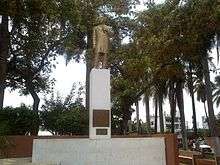
Benito Juarez was the first president of indigenous descent in all of Latin America and is one very few figures that is still almost exclusively seen as a positive figure in Mexican history. He was president from 1858 to 1864 and again from 1867 to his death in 1872. His saying "el respeto al derecho ajeno es la paz" (respect for the rights of others is peace) is still frequently quoted.
Porfirio Diaz
Porfirio Diaz, a general during the French intervention rose to power shortly after the death of Juarez and ruled Mexico from 1876 to 1911. While initially willing and able to reform and modernize the country, the sheer length of his reign and his corruption led to a lot of unhappiness about his government and in 1911 the Mexican revolution broke out to unseat him from power, but it soon devolved into factional fighting between various claimants for power and attempts at radical social and economic reform.
The Mexican Revolution
The Mexican Revolution started with resistance against a blatantly fraudulent election manipulatedo by Porfirio Diaz, but the revolutionary forces could not agree on their goals, ultimately resulting in a lot of infighting and even an US intervention.
Under the PRI
Once the dust of the revolution had settled the Revolutionary Institutional Party (PRI [pronounced /pree/] for its Spanish name) became the dominant political force and all presidents before the early 1990s were members of the PRI. They did not however establish a one party state and other parties were still legal and participated in elections, however the success of the PRI candidate (especially at the federal level) was almost always a given. As such political power struggles mostly took place within the PRI with more conservative or left wing factions gaining the upper hand from time to time. In 1988 during a presidential election that was actually close for the first time in decades a computer that counted the votes supposedly crashed and the words with which this was announced "se cayó el sistema" are noted for their ambiguity as they can mean either "the computer broke down" or "the (political) system fell". Nonetheless according to the official result (which was and still is doubted by many) the PRI candidate won a six year term in office just narrowly surpassing the 50% threshold needed to avoid a runoff election. In 2000 the PRI finally lost its first presidential election when Vicente Fox of the conservative National Action Party (PAN) won a narrow victory in a three-way race. In 2006 the PAN won again with Felipe Calderon being elected president but in 2012 the PRI returned to power with Enrique Peña Nieto, who promised to end the drug war being elected to the presidency. Whether this proves temporary or the PRI has indeed regained its once dominant status, remains yet to be seen.
Mexico today
Despite problems such as corruption and the drug war in the North (with some areas under de facto control of different cartels), Mexico has grown steadily, and there have been democratic multiparty elections with peaceful transition of power. A fairly stable three party system has emerged: the PAN (conservative) and PRI (centrist, catch all, sometimes leftist) have each won the presidency several times and the PRD (left of the PRI) has been a serious contender in almost all elections.
The drug war is ongoing and some parts of the country are not entirely safe, but the situation has bettered a lot after the 2000s. Generally the North with cities such as Ciudad Juarez notorious for their violence is more dangerous than the south and Yucatan is among the safest regions in Latin America. For more on the effects of the drug war see the stay safe section of this article and the individual region articles.
Get in
| Note: Mexico charges 390 pesos (May 2016) per person that has spent more than 7 days (inclusive) in the country, e.g., 1st to 7th is 7 days.
Payable on exit whatever the mode of transportation. N.B. on entrance, officials may say that 7 days is non-inclusive but you will find out otherwise when you exit the country. If you flew into Mexico on a commercial flight, the cost of your plane ticket already included the tourism tax and you absolutely do not need to pay it again upon exiting. You will need to prove to the border officials that you have already paid, by showing the following: 1) Your FMM card you received upon arrival, and 2) An itemized receipt from your flight purchase showing the Tourism Tax |
Visa and other entrance requirements
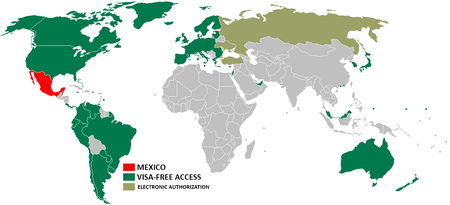
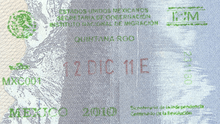
According to the Mexican Ministry of Foreign Affairs (Secretaria de Relaciones Exteriores), certain foreign nationals who intend to stay in Mexico fewer than 180 days for the purpose of tourism or 30 days for business can fill out a tourist card at the border or upon landing at an airport after presenting a valid passport, for US$22. If arriving via air, it is included in the price of the fare. This service is available to citizens of Andorra, Argentina, Aruba, Australia, Austria, Bahamas, Barbados, Belgium, Belize, Bulgaria, Brazil, Canada, Chile, Colombia, Costa Rica, Cyprus, Czech Republic, Denmark, Estonia, Finland, France, Germany, Great Britain, Greece, Hong Kong, Hungary, Ireland, Iceland, Israel, Italy, Jamaica, Japan, Latvia, Liechtenstein, Lithuania, Luxembourg, Macau, Malaysia, Malta, Marshall Islands, Micronesia, Monaco, Netherlands, New Zealand, Norway, Palau, Panama, Paraguay, Peru, Poland, Portugal, Puerto Rico, Romania, San Marino, Singapore, Slovakia, Slovenia, Spain, South Korea, Sweden, Switzerland, Trinidad and Tobago, United States of America, Uruguay and Venezuela (see official list here). Permanent residents of the United States, Canada, Japan, United Kingdom, and Schengen area countries are also eligible for visas on arrival regardless of citizenship.
The Mexican tourist card is a Forma Migratoria Múltiple (Multiple Immigration Form), or FMM. It has a perforation that divides the card into two parts, of which the right side asks for some of the same information requested on the left side. At entry, after reviewing your passport and filled-out FMM, the immigration officer will stamp your passport and the FMM, separate the FMM along the perforation and give the right side of the FMM back to you with your passport. Keep the FMM together with your passport at all times. It is your responsibility to make sure the right side of the FMM is returned to the Mexican government at time of departure so that the bar code can be scanned, thus showing that you left the country on time. For example, if you are flying with Aeromexico, they will ask for your passport and FMM at check-in for your flight home, then staple your FMM to your boarding pass. You are expected to then hand the boarding pass together with your FMM to the gate agent as you board your flight. If you lose your FMM during your visit to Mexico, you may be subject to substantial delays and fines before you can leave the country.
Electronic authorization (Autorización Electrónica) for travelling to Mexico is available on the Internet for nationals from Russia, Turkey, and Ukraine. Other nationalities must contact a Mexican consulate in order to find out the requirements for citizens of their country, and may have to apply for and obtain a visa in advance of travel. If you are in need of other information, Mexico has diplomatic offices in the following cities around the world. The consulates in the USA are typically open for business to non-citizens (by telephone or in-person) only from 8:30AM to 12:30PM.
If you cross the border via road, do not expect the authorities to automatically signal you to fill out your paperwork. You will have to locate the border office yourself.
The immigration officer at your point of entry into Mexico can also request that you demonstrate that you have sufficient economic solvency and a round trip ticket.
If you do not intend to travel past the "border zone" and your stay does not exceed three days, U.S. and Canadian nationals require only a proof of citizenship. Reentry into the United States generally requires a passport, but a U.S. or Canadian Enhanced Drivers License (or Enhanced Photo ID) or U.S. passport card is acceptable for reentry by land or sea.
By plane
From the United States and Canada
There are hundreds of daily flights linking Mexico to cities large and small throughout North America. This includes legacy carriers such as Air Canada, Aeromexico, Alaska Airlines, American Airlines, and Delta, and discount airlines such as JetBlue, Spirit, WestJet, Virgin America and Southwest Airlines. Also to be considered is the Mexican discount carrier Volaris, which operates from several major US cities (including Chicago, Denver, Las Vegas, Los Angeles, Oakland, Orlando, San Diego and Portland) through their hubs in Mexico City and Guadalajara. The other carrier, Interjet also serve Las Vegas, Los Angeles, Miami, New York City, San Antonio and Houston. In return, United Airlines/United Express (operated by Express Jet and Skywest) fly to additional cities in Mexico besides Guadalajara, Mexico City, Cancun, Puerto Vallarta and other major beach resorts (which are already served by multiple US & Mexican carriers) such as to Aguascaliente, Chihuahua, Ciudad de Carmen, Durango, Huatulco, Leon/Guanajuato, Oaxaca, Merida, San Luis Potosi, Torreon, Tampico, Veracruz and Villahermosa from Houston. Flights to additional Mexican cities are operated by Aeromar on a code-share basis.
As in the United States and Canada, you will have to clear immigration and customs at your first Mexican port of entry, even though that airport may not be your final destination. (For example, many trips on Aeromexico will involve connecting through its Mexico City hub.) You will then have to re-check your bags and go through security again to proceed to your next flight segment.
From Australia or New Zealand
Fly from Sydney, Brisbane, Melbourne or Auckland (NZ) direct to Los Angeles on Delta, Qantas, United, and Virgin Australia. Air New Zealand offers one-stop air service from Australia and non-stop air service from Auckland to Los Angeles. Hawaiian Airlines and Air Tahiti Nui offer one- or two-stop air service to Los Angeles from Australia and New Zealand.
Many airlines continue from Los Angeles to Mexico including AeroMexico/Aeromexico Connect, Alaska Airlines, Volaris, Interjet, United and Virgin America, some of which have interline or alliance ticketing and baggage check through. More options are available if connecting through another USA city. Also, make sure to have a good look at visas beforehand - even just for transit you will need something for USA, and if you get a visa waiver, they treat Mexico as part of the USA, meaning if you stay longer than 90 days in Mexico, you will need to travel further south before returning to USA.
From Europe
Most commercial airlines link Mexico directly from Europe. There are direct flights to Mexico City (MEX IATA) and Cancun (CUN IATA) from Paris (CDG IATA), London (LON IATA), Madrid (MAD IATA), Amsterdam (AMS IATA), Frankfurt (FRA IATA). Some carriers will serve both Mexico City and Cancun while other will only serve one and not the other (usually only to Cancun such as those from Russia and Italy). Additional flights to Cancun from Europe may only be available as charters and some may operate during the winter months (Dec-Feb) only. It is always worth to compare flight offers from air carriers and charter companies who can bring you to Mexico City or Cancun via many European hubs. The flight duration from those cities is always approximately 11 hours.
By train
From the United States to Mexico the nearest Amtrak stations are in San Diego, Yuma, Del Rio and El Paso. The frequent Pacific Surfliner connects San Diego from San Luis Obispo via Los Angeles; while the Sunset Limited and Texas Eagle pass by Yuma, El Paso and Del Rio between Los Angeles and San Antonio. In San Antonio the Texas Eagle continues northwards towards Chicago while the Sunset Limited continues east to New Orleans. Amtrak trains do not cross the border into Mexico so passengers continue to the border by local public transportation or by taxi from the Amtrak station.
There are no trains to the US/Mexican border from anywhere within Mexico or to the other border with Mexico's southern neighbors (Belize and Guatemala).
By car
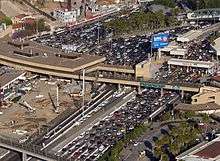
American automobile insurance is not accepted in Mexico; however, it is easy to obtain short-term or long-term tourist policies that include the mandatory liability coverage, theft and accident coverage for your vehicle, and often, legal assistance coverage. Should you decide to drive to Mexico, the Transport and Communications Secretariat website has free downloadable road maps.
Foreign-plated vehicles must obtain necessary permits before being allowed into the interior of Mexico. This can be done at the border checkpoints by showing your vehicle title or registration, as well as immigration documents and a valid credit card. It is now possible to apply for your vehicle import permit online. Vehicle permits will only be issued to the registered owner of the vehicle, so the papers will have to be in the name of the applicant. The Baja California peninsula and the northern part of the State of Sonora do not require a permit.
Due to the incredibly large volume of drugs and illegal immigration (into the US) and drug money & weapons (into Mexico) crossing the US-Mexico border, expect long delays and thorough searches of vehicles when crossing the border. At some of the busiest crossings, expect a waiting time of 1–3 hours.
By bus
The Mexican bus system is reportedly the most efficient in the world. Buses are without a doubt the backbone of personal intercity transport in Mexico as private car ownership is a lot lower than in its neighbor to the north and trains mostly serve cargo and tourism purposes. Chances are, you will meet a lot of locals, traveling by bus. Rates by distance are generally comparable to those of Greyhound in the U.S., but there are more departures and the system serves much smaller villages than its American counterpart. There are many bus companies based in Mexico with branch offices in major U.S. cities with a few such examples noted below:
- Autobuses De Oriente (ADO), Omnibus Cristobal Colon (OCC), Autobus Unidos (AU) Connects the USA border from Matamoros to the interior of Mexico along the gulf coast and once nightly buses from Cancun and Merida to Belize City (two separate routes). At other times passengers connect to onward buses to Belize in Chetumal an to Guatemala in Tapachula, Palenque and Ciudad Cuauhtémoc near the Guatemalan border in Chiapas.
- Omnibus Mexicanos, Noreste, Omnibus Express Offers intrastate travel from the border areas to several cities within the U.S. state of Texas and from Texas to Georgia, North Carolina and Florida as Omnibus Express
- Autobus Americanos -- co-brand between Grupo Estrella Blanca and Greyhound Lines for cross border travel between the U.S. and Mexico.
- Greyhound Mexico Connects Monterrey to Laredo, TX via Nuevo Laredo. They also operate Cruceros-USA connecting Tijuana to Los Angeles via San Diego and Santa Ana.
- Greyhound offers tickets from the US to major Mexican cities with Grupo Estrella Blanca further south of the border, including Monterrey, Querétaro, Durango, Mazatlan, Torreon, Guadalajara and Mexico City. It is best (and cheapest) to buy a round-trip Greyhound ticket since it may be more difficult and expensive to buy a ticket from Mexico to a US destination which is not a major city. When departing from Mexico, the local bus line (usually Futura) will change the Greyhound-issued ticket into its own, free of charge.
- El Expresso Houston based company that connects cities & towns in Mexico bordering Texas to Florida, the Southeastern part of the U.S. and to Chicago from several cities in Texas.
- Turimex Internacional Subsidiary of Grupo Senda for onward connections to Florida, the Southeastern part of the U.S. and to Chicago via Texas.
- TAP Royal A subsidiary of TAP connecting Tijuana and Nogales to Los Angeles, Phoenix and Las Vegas.
- TUFESA Connects Sinaloa, Sonora and Baja California in northwestern Mexico to multiple cities in California, Arizona, Utah and to Las Vegas NV via Los Angeles and Phoenix .
- El Paso-Los Angeles Limousines and Los Limousines Travels the I-10 corridor along the American side of the border from El Paso to Los Angeles and from El Paso towards Denver via Las Cruces NM along I-10 & I-25. Goes south from El Paso towards Torreon via Ciudad Juarez, Chihuahua City, etc. along Fed Hwy 45 as Los Limousines.
- Los Paisanos Connects El Paso to several cities in California, Texas, Oklahoma, Kansas and Missouri. They also have direct service from El Paso to Phoenix, Roswell NM and Caldwell ID in the U.S. The same company also offer service from El Paso to several cities in Chihuahua state, Zacatecas state & Queretaro in Mexico.
A ticket to a major Mexican city from the southwestern U.S. can be bought for as little as $60 round trip (San Antonio TX to Monterrey N.L.). These companies, however, cater mostly to Hispanics or Mexican Nationals living in the U.S. and operate mostly in Spanish.
In Mexico City (main transportation hub), buses from the U.S. border arrive at Terminal Norte. Buses going to Chiapas and Quintana Roo leave from both Terminal de Autobuses de Pasajeros de Oriente (TAPO) and Terminal Norte (same as U.S. bound buses). If going between bus stations, there are ticket desks for taxis at all bus stations where passengers can buy a ticket for a sitio taxi to transfer to the next bus station. Likewise if passengers are traveling light they can also use the metro which serves all major bus stations for a fraction of the taxi fare.
Onward connections to/from Guatemala through Tapachula and to Belize through Chetumal. There are additional connections (by shuttle) between San Cristobal de las Casas and Antigua Guatemala (via Comitan, crossing through Ciudad Cuauhtémoc/La Mesilla). The tickets on these shuttles are purchased from one of many agents in San Cristobal de las Casas. Passengers typically change vehicles at the border. The following offer regular first class pullman services out of Tapachula to Central America:
- Platinum Centroamerica Only serve Guatemala, El Salvador, Honduras and Nicaragua from Tapachula along Hwy CA-1.
- Ticabus major Central American bus line connecting the Central American capitals (except Belize) and to Tapachula from Panama City. Buses from Tapachula going to Panama City go through Guatemala City, San Salvador, Managua and S Jose CR. Passengers going to Tegucigalpa on Ticabus transfer in San Salvador or Managua.
- Trans Galgos Inter runs from Tapachula to Guatemala City via Coatepeque and Retalhuleu in Guatemala 2x daily and one extra run from Retalhuleu to San Salvador.
By boat
- Border crossing from Guatemala.
- Cruise ships from United States.
Get around
Travelling in Mexico is most practical by bus, car, or air. Passenger transport by train is almost nonexistent. Except the Chihuahua del Pacifico rail line which pull out every morning at both ends of the line, one from Los Mochis on the Pacific coast, across from Baja California, and the other from Chihuahua in the east (due south of El Paso, Texas). They cross each other roughly midways at Divisadero and Barrancas Copper Canyon stations at an altitude of 2100 m (7000 ft).
By car
- Main article: Driving in Mexico
Due to a government scheme in the early 1990s to create infrastructure, the best roads are toll roads. Toll roads can be relatively costly (M$400-800 is common on longer trips) but are much faster and better maintained. First-class buses generally travel by toll roads (and the toll is obviously included in the ticket price).
US vehicle insurance is not valid in Mexico, and while Mexican auto insurance is not required, it is highly recommended, as any minor accident could land you in jail without it. MexiPass and AAA offer Mexican auto insurance.
When traveling on Mexican roads, especially near the borders with the United States and Guatemala, one will probably encounter several checkpoints operated by the Mexican Army searching for illegal weapons and drugs. If you are coming from the United States, you may not be used to this, and it can be intimidating. However, these are rarely a problem for honest people. Simply do what the soldiers tell you to do, and treat them with respect. The best way to show respect when entering a checkpoint is to turn your music down, lift sunglasses from your face, and be prepared to roll your window down. They should treat you with respect as well, and they usually do. If you are asked to unpack any part of your vehicle, do so without complaint. It is their right to make you completely unload in order for them to inspect your cargo.
Tourists are often warned about travelling on roads at night. Although bandidos are rare in more metropolitan areas, err on the side of caution in more rural areas. The best bet is to drive during only daylight hours. Cattle, dogs, and other animals also can appear on the roadway unexpectedly, so if you do have to drive at night, be very cautious. If possible, follow a bus or truck that seems to be driving safely.
Foreign drivers' licenses are recognized and recommended. Speeding tickets are common, and to ensure your presence at the hearing, the officer may choose to keep your license. He is within his rights to do so. Beware though, police officers are known to keep driver's licenses until they are given a bribe.
At petrol (gas) stations, make sure the pump is zeroed out before the attendant begins pumping your gas so that you don't end up paying more than you should. There is only one brand of gas station (Pemex) and prices are generally the same regardless of location, so don't bother shopping around.
Good maps are invaluable and the Mexico maps included in "North American Road Atlas" books are worse than useless. The Guia Roji maps are particularly good.
By plane
Mexico is a large country, and with the low-cost revolution that started in 2005 following the break up of the CINTRA monopoly, new (budget) airlines had came in and expanded, offering competitive fares that rival bus travel over long distances. With increased fuel costs, the bargain days may be gone, but the prices are still more reasonable than when CINTRA operated Mexicana and Aeromexico, as a monopoly, before 2005. Major airlines hubs for all or several of the airlines are in Mexico City, Toluca, Guadalajara, Cancun and Monterrey. There are additional point to point services from several other cities.
The main airlines providing service to over 60 cities within Mexico are:
- Aeromexico/Aeromexico Connect, ☎ +52 55 5133-4000 (MX), toll-free: +1-800-237-6639 (US). Is the 'national' and 'legacy' carrier with hubs in Mexico City, Guadalajara and Monterrey. They're also a member of the SkyTeam Alliance.
- Aeromar, ☎ +52 55 51-33-11-11, toll-free: 01 800 237-6627 (MX).
- Interjet, ☎ +52 55 1102-55-55, toll-free: 01800 01 12345 (MX). Hub in Mexico City & focus cities in Cancun, Guadalajara and Monterrey. Internationally they go out to Canada, Costa Rica, Colombia, El Salvador, Guatemala, and the USA. Since 2015 they had tried to take over the spot in the One World Alliance left behind by Mexicana but were unsuccessful. They do have alliances with American Airlines, LATAM and Iberia all One World Alliance members.
- Magnicharters, ☎ +52 55 5678-1000, +52 55 5678-3600 (DF), +52 81 2282-9620, +52 2282-9621 (MTY). Hubs are in Monterrey & Mexico City. Used to operate only between Monterrey, Mexico City, Guadalajara & Cancun. They had since expanded to include additional Mexican and U.S. cities.
- VivaAerobus. Low-cost, Ryanair-like airline with hubs in Cancun, Monterrey, Mexico City & Guadalajara and new focus cities in Merida and Puebla. They expanded service to the USA after 2011.
- Volaris, ☎ +52 55 1102-8000, toll-free: +1 855 865-2747 (US). Hubs are in Mexico City, Tijuana and Guadalajara with focus cities in Cancun, Monterrey and Leon. They also have an additional hub in San Jose Costa Rica and a focus city in Los Angeles, outside of Mexico. Since the demise of Mexicana in 2010 they had expanded & taken over many of Mexicana's routes and airport slots within Mexico & the U.S. They had since expanded services to more cities in the U.S., Costa Rica, El Salvador and Nicaragua.
There are also small airlines operating within certain areas such as:
- Calafia Airlines, ☎ +1 619 489-1439 (US), toll-free: 01 800 5603949 (MX). Operates scheduled flights between multiple cities in the Baja California Peninsula and from the Baja California Peninsula to Chihuahua, Jalisco, Sonora & Sinaloa states. They also connect the Baja California Peninsula to Leon (Guanajuato), Monterey (Nuevo Leon), Mexico City and San Luis Potosi, all in the smaller Embraer ERJ & Cessna aircraft. They also connect Palenque and Tuxtla Gutierrez (Chiapas) to Mexico City and Cancun . They also offer charters & air taxi services too.
- Aerotucán, ☎ +52 952 502-0840, toll-free: 01800 640-4148. Flies between Oaxaca City, Ciudad Ixtepec, Huatulco and Puerto Escondido in Oaxaca state with the Cessna Grand Caravan plane.
- Mayair, ☎ +52 987 872-3609 (MX), +1 414 755-2527 (US & CA), toll-free: 01800 962-9247. Operates regional flights from Cancun to Cozumel, Chetumal and Merida and from Villahermosa to Veracruz and Merida in the smaller Dornier 228 and the Fokker 50 aircraft.
- TAR, ☎ +52 55 2629-5272. Hub in Queretaro with focus cities in Guadalajara, Monterrey, and Puerto Vallarta to multiple destinations with Embraer ERJ145 jets nationwide and expanding.
By bus
If traveling by bus, be sure to take the express (first class) buses (directo, sin escalas, primera clase), if available. First class (directo, sin escalas, primera clase) buses are usually direct routes and are the best option for most. These buses are comfortable, have washrooms/toilets and will generally show movies, which may or may not be in English with Spanish subtitles (or vice versa). Others may even offer a drink and a little snack. First class buses travel over longer distances between cities use toll freeways where available. They may make scheduled stops (semi-directo) at specific bus stations en route otherwise they make no stops en-route (sin escalas). Other buses such as the second class (economico, ordinario, local) buses may be very similar to first class only they travel along secondary highways through cities, towns and villages and stop anywhere along the road on request. Second class bus routes are typically shorter and will take considerably longer to travel over longer distances (such as from Cancun to Mexico City) with multiple stops and multiple transfers, it is not worth the few pesos saved over first class buses. They are fine for more local travel, such as between Cancun and Playa del Carmen or to somewhere along the highway in between. In other places they may be more frequent and more available than first class such as going to Zempoala (town) from Veracruz (city). Some of the second class buses may even be chicken buses (polleros) in rural, off the beaten track, places. Executive (Ejecutivo) and Luxury (Lujo) lines cost about 60% more than first class, are faster, usually have larger seats, and they have less frequent departures; they rival flying business class on a plane and are a good option for elderly or business travelers or overnight travel in lieu of a night's stay at a hotel (or hostel).
When acquiring tickets for the bus, the local custom is that the passenger comes to the terminal and buys the ticket for next available bus going to the desired destination with first and deluxe class buses unless it is during busy travel times such as Easter and Christmas. During busy travel times tickets can be booked one or two days in advance online or at the station. With second class buses, tickets can be purchased at the station within 2 hours of a departure, no advance reservations prior, at the beginning of a route or the fare paid to the driver if picked up from along side of the road. With the advent of NAFTA, some bus companies are now offering service from cities in several US states. The major bus companies offering these kind of services are:
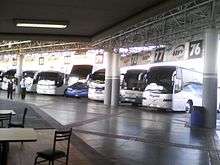
- ABC (Autobuses de Baja California). Bus services up and down Hwy 1 in the Baja California Peninsula in both Baja California Norte y Sur states and along Hwy 2/2D to western Sonora
- ADO (Autobuses Del Oriente), ☎ +52 55 5133-5133, toll-free: 01 800-009-9090. They operate the ADO, ADO GL, AU (Autobus Unidos), OCC (Omnibus Cristobal Colon), Platino, Texcoco, Diamante, Estrella de Oro, Cuenca and Pluss bus lines and the ClickBus booking site (formerly Boletotal & Ticketbus). They are a major bus company in the eastern and southeastern part of the country towards the Guatemalan border in the states of Guerrero, Puebla, Veracruz, Chiapas, Tamaulipas, Tabasco, and the Yucatan Peninsula (Yucatan, Quintana Roo and Campeche). Travel towards Guatemala via Tapachula or Tuxtla Guttierrez; to Belize through Chetumal and the United States border through Matamoros. They only offer cross border buses to Belize City from Cancun and Merida via Chetumal.
- Autobuses Coordinados de Nayrit (ACN), toll-free: 01800 026-73-73. They serve mainly in the western and northwestern states of Baja California Norte, Jalisco, Michocoan, Nayrit, Sinaloa and Sonora in Mexico and California (historically 'Alta California') in the U.S.
- Autovias, toll-free: 01 800-622-22-22. serving Colima, Guerrero, Guanajuato, Jalisco, Michoacan, Mexico DF, Estado Mexico and Queretaro. Other subsidiary brands include Allegra, La Linea and the Pegasso brands.
- Costa Line AERS, ☎ +52 55 5336-5560, toll-free: 01 800-0037-635. Serves mainly in Mexico state, Morelos and Guerrero from Mexico City. They also operate the Turistar, Futura and AMS bus lines.
- ETN (Enlances Terrestre Nacionales), Turistar Lujo. They offer a 'deluxe' or 'executive' class seating with 2 seats on one side of the aisle and one on the opposite side with more leg room and an ability to recline into a lying position. They go to Aguascaliente, Baja California Norte, Coahuila, Chihuahua, Durango, Guanajuato, Guerrero, Hidalgo, Jalisco, Mexico, Mexico City DF, Michocoan, Morelos, Nayrit, Nuevo Leon, Oaxaca (coast), Queretaro, San Luis Potosi, Sinaloa, Sonora, Veracruz (Poza Rica, Tuxpan) and Zacatecas states
- Grupo Estrella Blanca (White Star), ☎ +52 55 5729-0807, toll-free: 01 800-507-5500. They operate the Anahuac, Elite, TNS (Transportes Norte de Sonora), Chihuahuanese, Pacifico, TF (Tranporte Frontera), Estrella Blanca, Conexion, Rapidos de Cuauhtemoc, Valle de Guadiana and Autobus Americanos bus lines. As the largest bus company they serve much of the northern & northwestern part of the country such as Aguascaliente, Baja California Norte, Coahuila, Chihuahua, Durango, Districto Federal (DF), Guanajuato, Guerrero, Hidalgo, Jalisco, Estado de Mexico, Michoacán, Morelos, Nayarit, Queretaro, San Luis Potosi, Sinaloa, Sonora and Zacatecas states, up to the US border. They sell tickets for onward travel to the United States from the border on Greyhound Lines (and vice versa).
- Estrella de Oro (Gold Star), ☎ +52 55 5133-5133, toll-free: 01 800-009-9090. operates mainly between Mexico City and various places in Districto Federal (DF), Guerrero, Veracruz and Hidalgo states. They are now a subsidiary of Grupo ADO but continue to operate as a separate company and brand.
- Estrella Roja (Red Star), ☎ +52 222 273-8300, toll-free: 01 800-712-2284. Travels mainly between Mexico City and Puebla.
- Primera Plus (Grupo Flecha Amarilla), ☎ +52 477 710-0060, toll-free: 0800 375-75-87. Subsidiary of Grupo Flecha Amarilla which also include ETN, Turistar Lujo, Servicios Coordinados, TTUR and Flecha Amarilla (second class service) bus lines. They serve Jalisco, Michoacán, Guanajuato, Colima, Aguascalientes, Querétaro, San Luis Potosí, México,D.F., Nayarit, Estado de Mexico, Hidalgo, Guerrero and Sinaloa states
- Grupo Flecha Roja, Aguila, ☎ +52 55 5516 5153, toll-free: 01 800 224-8452. Operates mainly between Mexico City and various places in northern part of Mexico state into Queretaro state on the Flecha Roja brand and to the southeastern part of Mexico State into Guerrero and Morelos states as Aguila.
- FYPSA, ☎ +52 951 516-2270. operates mainly between Districto Federal (DF), Mexico state, Oaxaca and Chiapas states.
- Omnibus de Mexico, ☎ +52 55 5141-4300, toll-free: 01 800-765-66-36. They serve much of the central and northern part of the country such as Aguascaliente, Colima, Coahuila, Chihuahua, Durango, Guanajuato, Guerrero, Jalisco, Michocoan, Nayrit, Queretaro, San Luis Potosi, Sinaloa, Sonora, Tamaulipas, Veracruz and Zacatecas states, up to the US border.
- Pullman de Morelos, ☎ +52 55 5545-3505, toll-free: 0800 624-03-60. Operates buses in/around Guerrero and Morelos. They operate the Ejecutivo Dorado (Golden Executive), Pullman de Lujo, Primera Clase, Primera Federal and Primera Local (2nd class).
- Grupo Senda. They serve much of the north central part of the country such as Aguascaliente, Colima, Coahuila, Chihuahua, Durango, Guerrero, Jalisco, Michoacan, Nuevo Leon, Queretaro, San Luis Potosi, Sinaloa, Tamaulipas and Zacatecas states, up to the US border as. From the border they continue up to the southeastern and central U.S. states of Alabama, Arkansas, Georgia, Illinois, Louisiana, Mississippi, Oklahoma, North Carolina, South Carolina and Tennessee from Texas as Turimex Internacional. They also operate the and Del Norte and Coahuilenses bus lines in north central part of Mexico, south of Texas.
- TAP, toll-free: 0800-0011-827. Operates bus more or less along the Hwy 15 corridor between Tijuana and Guadalajara and other places off of the Hwy 15 corridor in Baja California Norte, Guerrero, Jalisco, Michoacan, Nayarit, Sinaloa, Sonora, Estado de Mexico and Mexico DF. They also operate the TAP Royal bus lines from the border to Los Angeles, Phoenix, Las Vegas and Tuscon in the southwestern part of the U.S.
- Zina Bus, Excelencia, Excelencia Plus, ☎ +52 55 5278-4721. Goes from Mexico DF to the surrounding Mexico, Guerreo and Michoacan states. The company also operate Autobus Pegasso to Guanajuato and Querétaro as well as Estado de Mexico and Michoacán.
The above are major bus lines traversing much of the country with some crossing the border into the U.S. No bus company holds a large market share nationwide like Greyhound in the U.S. but some do have a greater market share in certain regions. There are over 200 other companies and drivers' unions operating buses not listed in the above which you will find once there or see (or add to) the specific articles of a region, city or town.
On the other hand if traveling within a city, you won't find a pleasant surprise. You will find one of the most chaotic public transport systems full of the popular "peseros". "Peseros" are small buses with varying color codes depending on the city you are in. Usually the route taken is written on cardboard attached to the windshield or with wet and than dried soap or chalk on the windshield listing the local colonias (neighborhoods) and points of interest (Wal Mart, Costco, malls, hospitals, universities, etc.) the route serves and are not numbered. Unlike in many countries, bus stops are uncommon and you are expect to signal the bus to pick you up and drop you off wherever you want. You will rarely find a stop button in a pesero; just shout the word "baja!" for it to stop. Fares are cheap and vary from M$5-8 approximately.
By train
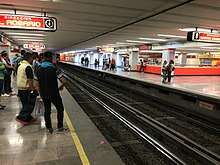
The only available passenger train is the Chihuahua al Pacific Railway (CHEPE) operated by Ferromex between Los Mochis and the city of Chihuahua, through the Copper Canyon. In the state of Jalisco there are a couple of lines which travel from the state capital city of Guadalajara to the nearby tequila distilleries in the small town of Amatitlan on the Tequila Express and to the Jose Cuervo distilleries in the town of Tequila on the Jose Cuervo Express. The latter two from Guadalajara are tourist trains offering tours of the tequila distilleries than as a form of transportation to get to those towns.
It may be possible to hop aboard or on top of freight cars in some parts of the country (if you happen to be an adventurer) as many migrants traveling from Central America to the USA are doing this. The prospect of hopping the freight is dangerous due to the lack of restraints which results in falling off, getting ran over by the wheels, getting hit by an oncoming train (if fallen into the wrong spot), or being robbed by bandits along the way.
That being said, there have been talks of expanding suburban rail services in several cities and high-speed passenger services, but no plans have materialized as of May 2017. Mexico City, Guadalajara and Monterrey have subway and/or light rail services.
By thumb
One upside of the high petroleum prices is that hitching is beginning to be more common in Mexico again, particularly the rural areas. In areas near big cities, hitching should be more difficult, and is not really advisable for security reasons.
However, in village areas, this will be really possible and most likely a nice experience. Since villagers have always had a hard time affording gas, and nowadays many are turning to picking up paying hitchhikers as a way to afford the next trip into town. Baja California, the Sierra Tarahumara and Oaxaca and Chiapas all have good possibilities for the hitchhiker.
Hitchhiking possibilities vary according to region. Mexican culture is often accepting of hitchhiking and it's a common practice among Mexican youngsters going to the beach in Easter vacations, though in some cases a money contribution is expected for gas because of its relatively high prices. You should make it clear that you have no money to offer before accepting the ride, if this is the case. If you're willing to pay, trucks will often provide lifts for about half the price of a bus ticket. Of course you may be able to negotiate a better deal. Hitchhiking is considered fairly safe and easy in the Yucatán Peninsula.
Talk
- See also: Spanish phrasebook
Spanish is the de facto national language. Spanish is used by virtually the whole population and all public communications (signs, documents, media, etc.) are conducted in the language.
Mexico has one of the richest diversity of more than 60 indigenous languages spoken with official recognition. These languages are spoken within the communities that are largely segregated from mainstream mestizo society. About 5% of Mexicans speak an indigenous language. Most of these communities are fluent in Spanish as well.
English is understood by many in Mexico City as well as by some tourist workers in popular tourist places, but nevertheless, many Mexicans do not speak English. The most popular foreign languages to learn within Mexico after English are French, Italian, German and Japanese. German, French, and Russian may be known by some in the tourism industry, but among clerks, policemen, and drivers (most particularly the last) there is basically no such thing as knowledge of foreign languages. Bilingual signs in Spanish and English might be available in popular tourist destinations.
See
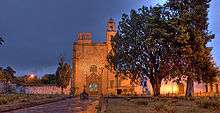
There are 32 UNESCO world heritage sites in Mexico, more than anywhere else in the Americas. Most of them are in the cultural category and relate to either the pre-Columbian civilizations in the area or to early cities established by the Spanish conquistadores and missionaries. Much of Mexico is mountainous with some mountains rising higher than 5,000 m over the sea level.
Mexico is on the border of two bioregions; both North American wildlife and Central and South American wildlife can be seen in the country.
Buy
Money
|
Exchange rates for Mexican pesos As of January 2019:
Exchange rates fluctuate. Current rates for these and other currencies are available from XE.com |
The currency of Mexico is the peso, denoted in Mexico as "$" (ISO code MXN) and in Wikivoyage as "M$". It is divided into 100 centavos. Prices in US dollars (in tourist areas) are labeled "US$" or sport an S with a double stroke.
Coins are issued in 5, 10 (steel), 20, 50 centavo (brass; new 50-centavo coins issued from 2011 on are steel and smaller in size) and 1, 2, 5 (steel ring, brass center), 10, 20, 50, and 100 peso (brass ring, steel or silver center) denominations, but it's extremely rare to find coins valued at more than 10 pesos.
Banknotes are produced in 20 pesos (blue), 50 (pink-red), 100 (red), 200 (green), 500 (brown), and 1,000 (purple and pink for the latest issue, purple for older issues) denominations. The current issue of 20, 50 and 100 peso bills are made from polymer plastic, and there are several different series of all banknotes. Ten-peso notes exist, but are very rare and no longer issued and accepted.
"Old" pesos (issued before 1993) are no longer accepted, but are usually collected by numismatists.
Merchants may accept US dollars at a lower exchange rate. US dollars are widely accepted in the far north and in tourist locales elsewhere.
Other currencies such as the euro, pound sterling, and Swiss franc are generally not accepted by merchants, and even banks headquartered in Europe may refuse to accept euros for exchange. On the other hand, most banks and exchange offices (casas de cambio) will widely accept them.
If you arrive from the south and still carry Central American currency around try to exchange them as soon as possible, as outside of the immediate border area not even banks will accept them. As all Central American countries either have the US dollar as their national currency (El Salvador, Panama) or have it circulating to varying degrees as a de facto second currency and virtually all banks in Central America and most banks in Mexico accept US dollars (usually at better rates than any other currency) your best bet is to "triangulate" your money from local currency to dollars and from dollars to pesos rather than exchanging them directly, which can be difficult and expensive. Should you have forgotten to exchange your money and the banks are closed, street money changers (called coyotes or cambistas) don't have fixed opening hours and often have better rates. Be careful however, as they do from time to time rip off foreigners with bogus calculators, wrong rates and counterfeit or outdated (and thus worthless) bills.
Banking
If you have brought cash in US dollars or euros, the best places to change your money are at an arrival airport (such as MEX and CUN), where many money exchanges are located already in the arrival hall (where you can also compare some exchange rates and choose the most convenient) and, normally, at airports, the exchange rate is usually fair. Be sure to pass through Customs before looking for foreign exchange as inside the customs zone in Cancun the rate is far lower than what the greediest street vendors ask for.

If you would like to wait until later to obtain Mexican currency, try not to change at your hotel, as the rates there tend to be extremely disadvantageous for tourists. However, some hotels provide exchanges as a courtesy, in this case it is best to ask just to make sure. Often, you can find money exchanges at strategic places in most touristic destinations and near the hotel (zones). The exchanges rates should not differ drastically from the ones at airport. If you are unfamiliar with Mexican money (bills, coins), try to stick to official foreign exchange booths. In several internationally popular beach destinations like Cancun and Los Cabos, local merchants are accustomed to U.S. dollars and will often accept them as payment (they even have dual-currency cash registers and drawers). However, do bear in mind that the convenience of such “private” money exchange usually comes with a slightly unfavorable exchange rate.
Credit and debit cards (with Maestro or MC/Visa affiliation) are widely accepted in Mexico. You can use them at ATMs as well as in most department stores, bigger restaurants, gas stations, but be sure that outside cities you always carry sufficient cash in pesos in your pocket, and generally verify the possibility to pay with card before consumption. Smaller (often family run) businesses often accept only cash. Most of the time, an extra 5% when paying with card is added. Also, you cannot get lower prices if you haggle unless you pay cash. Often, you can pay half or less by acting like you are leaving.
While many Pemex stations accept credit cards, especially in locations that have heavy tourist traffic, some do not; travellers who intend to pay by credit card should always ask the attendant if the card is accepted before pumping begins.
ATMs are easy to come by. Bank of America customers can avoid ATM fees by using Santander Serfin ATMs. Other banks may have similar policies, check with your respective institution. For example, Banamex bank is owned by Citybank/Citygroup, and Bancomer is owned by BBVA, who is related to Chase in USA. Ask to your bank if they have relation with Mexican banks, and the advantages that such ally can provide. Otherwise, do not be surprised to find yourself with a fee for each withdrawal. ATMs in smaller towns can run out of currency; sometimes this is a regular occurrence. Check with the bank (or locals) about the best time to use the ATM and never wait until the last minute to get cash.
Tipping
Tipping in Mexico is similar to the United States. It is usually from 10 to 15%.
Meals have a 10% to 15% tip (this includes fast food deliveries). This tip is usually left by most people in restaurants, although it is not so common in street restaurants or stands, where the tenders usually have a can or box where people deposit coins.
It is generally common to leave a tip on the table after paying and therefore having small change is very useful.
In Mexican bars and night clubs it is often seen that they charge directly into the bill the 15% of the total amount (taxes included). That is illegal in most cases because of the imposition of the tip and because they calculate the 15% with taxes included. In large groups, or in nightclubs the barmen expect the customers to deposit their tip in a cup left on the table before serving the drinks so the service they give is in function with the tip they received.
It is also customary to give a tip to the person who sometimes guard the car as if they were valet parking; in Mexico these people are often called "viene viene" (literally: "comes, comes") or franeleros and usually people give them M$3-20 depending on the zone, although they sometimes ask for bigger sums of money when the car is left close to a night life area.
In medium and large retail stores such as Wal-Mart there are uniformed helpers, usually children or the elderly, who bag the products just after the clerk has scanned them. This role is called cerillo (Spanish for "match"). It is common for these helpers to not have a basic salary, so all the money earned is from the tips people give them. Most customers give M$2-5 depending on the number of products. Cerillos also put the bags in the cart and if the load is large they can even help bringing it to the car and unloading the bags; in these cases, they normally receive more than M$15.
Tipping is not expected in cabs or buses, except when it is a tour. In some populated Mexican restaurants wandering musicians enter, play, and expect the customers to pay something, although this is voluntary. In filling stations, the workers usually get M$2-5 for every gasoline load. In stadiums people give a small tip to the person who shows the place where they should sit. Tips are also given to bellboys, barbers and people that work in similar services.
Shopping
- Weights are measured in kilograms. Length is measured in centimeters and meters.
- For clothes and shoe sizes, the "Continental" measurements are used.
Merchants can be picky about the state of your paper money and may scrutinize it and reject anything with rips. Try to keep it in as pristine condition as possible. Reputedly, this is more the case the farther south you go. In any case, you can easily enter a bank with some damaged bill to get it exchanged into another one.
Merchants are often reluctant to make change in smaller towns. Try to avoid paying with overly large denominations; the best customer has exact change. In rural areas, your 'change' may consist of chiclets or other small commodities.
Merchants, specially those in small markets ("tianguis") and street vendors are no strangers to haggling. Try asking "¿Es lo menos?" ("Is this the smallest price?"), The more rural and less touristic the area you're likely to have more success.
- Indigenous Art A visit to anywhere in Mexico will give one the opportunity to buy art made in the "old world" manner that reflects the diverse ethnicity of Mexico. Included in these articles would be textiles, wood carvings, paintings and carved masks that are used on sacred dances and burials.
- Timeshares When visiting the resort cities of Mexico (e.g. Cancun, Puerto Vallarta or similar), it is more than common to be approached on the streets, in bars, in restaurants and anywhere with offers of gifts, free rental cars, free nights, free dinners, free anything that may appeal to you, just for visiting and listening to a presentation to buy a timeshare. Unless you are severely desperate for something to do, you may want to ignore those making the offer and stay away from those free offers. While the properties are very nice, great locations and plenty of amenities, this is not the place to learn about timeshares. Do your homework before even thinking about buying a timeshare, see what the values are in the resale market and understand the rights you are buying and the future costs. Collecting on the free offers may be difficult, if not impossible.
- Automobiles It's certainly worth going over and importing a car back from there, although importing it to the EU/US standards is the hard part. Recommended are the Ford Fusion (like the British Ford Mondeo, but more upmarket) and the Chrysler 200 (the 2.4 model is worth it). Volkswagens can be substantially better-equipped than European or North American counterparts. The Passat sold in Mexico is not the same car as in Europe, and is substantially bigger, however, engines are the same as in Europe, except for the 2.5 petrol.
- Cuban cigars are a fun novelty for tourists from the US and are widely available. It's still illegal to bring them back to the US, although the worst that's likely to happen is they'll be confiscated by customs.
Do
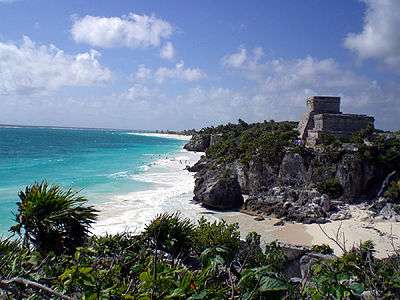
The warm Mexican climate, spectacular nature and long coastline make the country great for outdoor life, especially water sport.
- Surfing - Baja California, Vallarta, Oaxaca
- Sea Kayaking - Baja California
- Snorkeling - Baja California, Cancun, Cozumel, Isla Mujeres, etc.
- Scuba diving - Baja California, Cancun, Cozumel, Isla Mujeres, Acapulco, Cabo San Lucas etc., and cave diving in the cenotes of the Yucatán peninsula.
- Whale Watching - Baja California, Guerrero Negro, Mazunte, Zipolite
- White Water Rafting - Veracruz
- Visit a Volcano - Mexico, Toluca etc.
- Take a ride on the Copper Canyon Railway
- Enjoy the beautiful coast line and beaches of Oaxaca - Huatulco, Mazunte, Zipolite, Puerto Angel, Puerto Escondido, etc.
- Go for a horseback ride in the Barrancas de Chihuahua
- Visit the archaeological sites - Chichen Itza, Tulum, Coba, Monte Alban, Calakmul, Palenque, etc.
- Volunteering - Chiapas or in Xalapa, Veracruz with Travel to Teach.
- Visit ecological parks - Mayan Riviera
- Trekking and viewing cave paintings in Baja California - Guerrero Negro
- Sea turtle Museum Mazunte
Sports
Football (soccer) is Mexico's national sport, and its top men's league, the Liga MX, is one of the best funded outside Europe. The big four teams in the Liga MX are América, Guadalajara, Toluca and Cruz Azul. The Mexican national team is also a regional powerhouse, and matches against its northern neighbour, the United States, are particularly charged affairs.
Baseball is perhaps the second biggest team sport in the country but it is very much a regional affair. The best players make it to Major League Baseball, but the national league isn't half bad either.
American Football has a long tradition in Mexico but has often been relegated to third fiddle by the more popular soccer and baseball. Estadio Azteca has seen a handful of NFL games (including, at a time, the best attended NFL game in league history up to that point) and besides a long-standing college league, there is now also a professional league with teams focused in and around Mexico City.
Eat
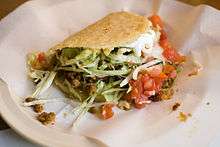
- See also: Mexican cuisine
Mexican cuisine can be described better as a collection of various regional cuisines rather than a standard list of dishes for the whole country. Because of climate, geography and ethnic differences, we can classify Mexican cuisine broadly in 4 great categories according to the region:
- Northern - Mostly meat dishes done mainly from beef and goat. This includes Cabrito, Carne Asada (Barbecue) and Arrachera. Is influenced by international cuisine (mostly from the United States and Europe), but it retains the essential Mexican flavor.
- Central - This region is influenced by the rest of the country, but has its own well-developed local flavor in dishes such as Pozole, Menudo and Carnitas. Dishes are mostly corn-based and with different spices.
- Southeastern - Is known for its spicy vegetable and chicken-based dishes. Caribbean cuisine have influences here because of the location.
- Coast - Has a strong emphasis on seafood and fish, but corn-based recipes can be easily found as well.
Ask for the "platillo tipico" of the town, which is the local speciality that may not be found elsewhere, a variation, or the birthplace of a recipe, also consider that most of the recipes change from place to place, like tamales, in the south are made with the banana plant leaves, and in the Huasteca region tamales are very big (There are called "Zacahuil"), one is OK for a complete family.
If you are travelling here from Spain or elsewhere in Latin America, keep in mind that many Mexican dishes can have the same name, but be very different from their counterparts elsewhere. For instance, a Mexican tamal is very different from a Colombian tamal, and a Mexican tortilla bears virtually no similarity at all to a Spanish tortilla.
Traditional Mexican food can often be very spicy; if you are not used to peppers, always ask if your food includes it. "(¿Esto tiene chile? Es picante?)."
There are many food carts on the streets of Mexican cities and towns. Travelers are advised to eat from these carts with caution, as hygienic preparation practices are not always reliable. In doing so, you may (or may not) find some of the most unique and genuinely Mexican dishes you've ever had. From these vendors, you may find tacos, burgers, bread, roasted field corn or elote served with mayonnaise, or a light cream, and sprinkled with fresh white cheese, roasted sweet potato called camote, and almost any kind of food and service you would imagine.
- Chicharrón - Deep fried pork skin. Quite crunchy and if well-prepared slightly oily. Heavenly spread with guacamole. Or sometimes cooked in a mild chili sauce and served with eggs.
- Enchiladas - Chicken or meat stuffed soft tortillas covered with green, red or mole sauce. Some may have melted cheese inside and/or on top.
- Tacos - Soft corn tortillas filled with meat (asada (steak strips), pollo (shredded chicken), carnitas (fried shredded pork), lengua (cow tongue), cabeza (meat from cow skull), sesos (cow brains), tripa (cow gut), al pastor (chili, pork, beef cut from a spit) or chorizo (pork sausage)). In the north sometimes flour tortillas are used. Do not expect the crispy taco shell anywhere.
- Tamales (singular tamal) - corn dough shell with meat or vegetable fillings. Tamales Dulces contain fruit and/or nuts.
- Tortas - Fancy Mexican sandwich. Bread roll that is grilled lightly, meat fillings are same as tacos, lettuce, tomatoes, jalapeños, beans, onion, mayonnaise and avocado. One is beginning to find tortas with the American styled cold cuts available, as well, in urban areas.
- Huitlacoche - (wit-la-ko-che) A fungus, much like mushrooms, found in corn. This dish is usually an additive to others. Foreigners might find it hard to stomach but Mexicans swear by it. Although most Mexicans love huitlacoche, most do not prepare it in their own home very frequently. It can be found in most markets or stores.
- Quesadillas - Cheese or other ingredients grilled in between corn tortillas, heavy on cheese and lighter on other items such as chicken, pork, beans, squash flower blossoms and such.
- Mole - Mild to medium chili based sauce made with cocoa and a hint of peanut over meat, usually served with shredded chicken or turkey. ('Pollo en mole' and this is known as Puebla or poblano style). There are many regional moles and some are green, yellow, black and can vary greatly in flavor depending on the artistic talent or preferences involved.
- Pozole - Chicken or pork broth with hominy corn, spiced when served with oregano, lettuce, lemon juice, radish, chopped onion, dried ground chile and other ingredients such as chicken, pork, or even seafood, usually served with a side dish of tostadas, fried potato and fresh cheese tacos. Very fortifying.
- Gorditas - corn patty stuffed with chicharron, chicken, cheese, etc. topped with cream, cheese and hot sauce.
- Grillo - Grasshopper, usually cooked and placed inside another dish such as a quesadilla. It is frequently found in markets in the state of Morelos and other central Mexico states. This is not common in Mexico City.
- Guacamole - crushed avocado sauce with green serrano chile, chopped red tomato and onion, lime juice, salt, and served with somewhat thick (1/8 inch) fried tortilla slices or "totopos".
- Tostadas - fried flat tortilla topped with fried beans, lettuce, cream, fresh cheese, sliced red tomato and onion, hot sauce, and chicken or other main ingredient. Think a corn chip dippers, on low dose steroids, for salsas and as above. You do not usually get a plate of this automatically in many parts of Mexico as you would in the US, although they are starting to show up in resort areas that cater to US nationals automatically.
- Huaraches - a bigger (think shoe-shaped) version a gordita.
- Sopes - corn patty topped with a wide variety of ingredients such as chicken, cheese, mashed beans, and various hot sauces.
- Carnitas - deep fried pork meat served with a variety of salsa", to get them dry with less grease.
- Chile en nogada - A big green Poblano chile with a beef or pork apple stuffing, covered with a white nut (usually walnut, known as nuez) sauce and sprinkled with pomegranate seeds which happen to be red. The three colors represent the national flag and the dish is served nationwide around Mexican Independence Day 16 September.
- Barbacoa - Sheep or goat meat cooked with maguey leaves in an oven made at a hole in the ground. Think BBQ heaven without the hickory smoke or catsup-based BBQ sauce. Served with condiments and salsas in corn tortilas and sometimes in a torta bread roll.
- Sopa de Tortilla - tortilla chips soup usually of chicken broth, plain or with a touch of tomato flavor, and usually mild and not at all hot. Commonly served with diced avocado and fresh crumbled white cheese on top.
- Chilaquiles - tortilla chips with a green tomatillo, or red tomato, or mild chili sauce, usually served with chicken or eggs on top or within. Usually a mild dish.
- Migas - is a typical dish in the center of the country which is a guajillo chile broth with soaked bread, which you can add the pork bones with meat or eggs.
You can measure the quality of food by popularity; do not eat in lonely places, even if they are restaurants or hotels. Consider that Mexicans eat their main meal in the middle of the afternoon (around 3 o'clock), with breakfast or "almuerzo", a mid-morning affair after a very light something, like a small plate of fruit or a roll with coffee, in the very early morning. Although, many Mexicans have large breakfasts in the morning. Later, at night the meal varies from very light, such as commonly sweet rolls or breads, coffee or hot chocolate, to heavy dinner, such as pozole, tacos, and tamales. Schedule your meals accordingly and you will get a better perspective on the gauge of how busy (popular) a restaurant is.
Drink
Tap water is potable, but generally not recommended for drinking. Some exaggerated people even claim that tap water is not good for brushing teeth. Hotels usually give guests one (large) bottle of drinking water per room per night. Bottled water is also readily available in supermarkets and at tourist attractions.
- Absinthe is legal in Mexico.
- Tequila, distilled from Agave (a specific type of cactus)
- Pulque, ferment made from Maguey
- Mezcal, similar to tequila but distilled from Maguey
- Tepache, made from pineapple
- Tuba, made from coconut palm tree
There are also several Mexican beers, most of which are available outside Mexico, these include Corona (popular, but not necessarily as overwhelmingly popular in Mexico as many foreigners think), Dos Equis (XX) and Modelo Especial.
Lighter Mexican beers are often served with lime and salt, though many Mexicans do not drink beer in this fashion. In some places you will find beer served as a prepared drink called "Michelada" or simply "Chelada". The formula varies depending on the place, but it's usually beer mixed with lime juice and various sauces and spices on ice served in a salt rim glass. Other variation called "Cubana" includes Clamato cocktail, soybean sauce, salt and a little bit of hot sauce.
Northwestern Mexico, including Baja California and Sonora, also produces wines, and Mexican wine is often quite good, but most Mexicans tend to prefer European or Chilean imports.
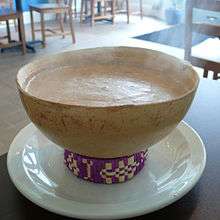
Non alcoholic beverages:
- Chocolate
- Atole
- Horchata (rice based drink)
- Agua de Jamaica (hibiscus iced tea, similar to karkadai in Egypt)
- Licuados de fruta (Fruit smoothies and milkshakes)
- Champurrado (Thick chocolate drink)
- Refrescos (common sodas, generally sweet and made with cane sugar, not corn syrup as in the United States).
The legal drinking age in Mexico is 18, but not strictly enforced. In many places, consumption of alcohol in public ("open container") is illegal and usually punishable by a day in jail. Be aware of waitresses and barmen, especially at night clubs. If you are not aware of your consumption and how much you already spent, they can add a few more drinks to your account. Some do this, not all.
Alcoholmeters are widely used in driving roads If drinking, always have a designated driver. Driving under the influence of an alcoholic beverage will result in 1 to 3 days in jail.
Mexico, especially the southern state of Chiapas, produces excellent coffee. Café con leche, usually one part coffee to one part steamed milk, is very popular. Unfortunately, many places in Mexico that are not cafés serve Nescafe or other instant coffee - you may have to search for the good coffee, but it's there.
Learn
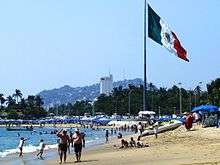
The most important Universities in Mexico include the UNAM, ranked 73rd worldwide, and the best in Latin America. Its main campus is a UNESCO World Heritage site. Murals in the main campus were painted by some of the most recognized artists in Mexican history, such as Diego Rivera and David Alfaro Siqueiros. IPN (Instituto Politécnico Nacional), ITESM (Instituto Tecnológico de Estudios Superiores de Monterrey, located in Monterrey but with branch campuses in many other Mexican cities) the Iberoamerican University (Universidad Iberoamericana, part of the Jesuit University System) and Universidad Anahuac.
Most of the government-funded universities on mayor cities (state capital) have short courses on history, gastronomy and cultural subjects, most of them are almost free. Other places are the "Casa de la Cultura", (house of culture) that are historical buildings used for cultural related activities (music concerts, theater, paint and other exhibits, they also have "talleres" (workshops).
Most places have programs for foreigners to learn Spanish, or even study a whole degree. There are some other courses where you can learn traditional Mexican activities such as handcrafts. The tuition at a public school is rarely over US$200.
There are Spanish language schools throughout Mexico. The city with the most schools is Cuernavaca, with more than 50 schools. Oaxaca, San Miguel de Allende and Guanajuato also offer a number of schools to choose from. Prices vary; however, most schools are very reasonably priced. Many schools can arrange homestays with local Mexican families.
Work
Working may require a work visa, which is difficult to get if you just want to freelance for a short time.
Many important headquarters are located throughout the main cities of Mexico. Top Mexican corporations such as Televisa, Bimbo, Cemex, Telmex and Vitra are often willing to hire professionals who are native English speakers as much of their business is developed alongside North American corporations.
Native English speakers can pick up work as English teachers. The upside is that English speakers with no knowledge of Spanish are appreciated, because they will force their students to practice English. The downside is that salaries are somewhat low.
Sleep
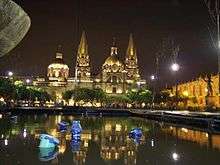
A number of hotel chains are available throughout Mexico, including Palace Resorts, Le Blanc Spa Resort, Best Western, Holiday Inn, CityExpress, Fiesta Inn, Fairmont, Hilton, Ritz, Camino Real, Starwood (Sheraton, W, Westin, Four Points) and many others. Rates have risen considerably, though most are still reasonable compared to similar U.S. or European hotels. Chain accommodations are usually clean and comfortable, good for business travelers, but not necessarily for those wanting to experience Mexico itself. Smaller hotels and motels along the roadside may not be safe or comfortable. Boutique hotels are found all over the country; price range varies but all of them are rich in Mexican traditions, elegance and charm, the perfect way to experience the cultural heritage of each state. A great source of information is Melba Levick's book Mexicasa, found in many libraries and online bookstores. There are also many all-inclusive resorts for those visiting the major beach destinations.
There is a large backpacker culture in Mexico, and there are many hostels offering dorm accommodation and private rooms. You can expect to pay M$50-150 for a night in a dorm, often including breakfast. Hostels are a fantastic place to share information with fellow travelers, and you can often find people who have been to your future destinations. There are a number of internet sites that allow you to book hostels in advance for a small fee, and this is becoming an increasingly common practice.
The most authentic accommodation can usually be found by asking locals or gringos, especially in the smaller towns. If you are unsure about the safety or conditions of the room ask to see it before paying. This will not be considered rude.
If you are going to be in cooler areas in the winter consider bringing an electric blanket, a sleeping bag or extra clothes, as there is power, but no heat in the cheaper hotels. And although it may get quite hot by afternoon outside, adobe and cement are like fridges. An electric tea kettle is also a good idea, as hot water might not be available when you want it.
If you're travelling with children, use a plastic case (with wheels and a handle) as luggage, and it can be used as a bathtub for the kids if necessary. Budget hotels rarely, if ever, have bathtubs.
Stay safe
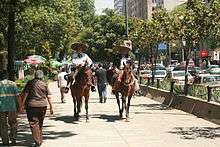
| WARNING: Regions affected: Northern Baja California, Sonora, Chihuahua, Coahuila, Guerrero, Michoacán, Nuevo Leon, Sinaloa and Tamaulipas A travel advisory was issued December 8, 2016 due to gun battles between rival criminal organizations or with Mexican authorities. U.S. citizens have been murdered in carjacking and highway robberies. The Mexican government makes a considerable effort to protect visitors to major tourist destinations, and resort areas and tourist destinations in Mexico generally do not see the levels of drug-related violence and crime reported in the border region and in areas along major trafficking routes. Nevertheless, crime and violence are serious problems and can occur anywhere. | |
Government travel advisories
| |
| (Information last updated Dec 2016) |
The nationwide emergency number is 911.
In most of the cities, location is very important as security changes from place to place. Areas close to downtown (centro) are safer to walk at night, especially on the "Plaza", "Zócalo" or "Jardín" (main square) and areas nearby. Stay in populated areas, avoid poor neighborhoods, especially at night, and don't walk there at any time if you are alone. Vicious beatings have been reported at resorts by people who have travelled alone, so stay alert for any suspicious-looking individual. If you wish to visit one of the slums, you should only go as part of a guided tour with a reputable guide or tour company.
Violence related to drug cartels is an issue; see drug traffic issues below.
Political violence in Chiapas and Oaxaca has abated, and is far less of a threat than drug-related crime. However, Mexican authorities do not look approvingly on foreigners who participate in demonstrations (even peaceful ones) or voice support for groups such as the Ejército Zapatista de Liberación Nacional and its leader, Subcomandante Marcos, even if their images and slogans are commonly sold on t-shirts and caps in markets.
Do not wave cash or credit cards around. Use them discreetly and put them away as quickly as possible.
If you ever find yourself in trouble with the law in Mexico, the punishments are a lot more severe than in many other countries.
Beggars are not usually a threat, but you will find lots in urban areas. Avoid being surrounded by them as some can pickpocket your goods. Giving away two pesos quickly can get you out of such troubles (but may also attract other beggars). Most poor and homeless Mexicans prefer to sell trinkets, gum, sing, or provide some meager service than beg outright.
In other cities, such as Guadalajara and Mexico City, are safer than most places in Mexico. However, caution is still recommended.
Drug traffic issues
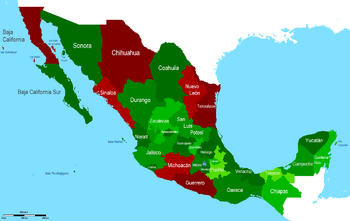
Understand that the country is going through a transitionary period. Past president Felipe Calderon waged war on the drug cartels, and they have waged war in turn against the government (and more often, among each other).
Some Mexican northern and border cities such as Tijuana, Nogales, Nuevo Laredo, Chihuahua, Culiacán, Durango, and Juárez can be dangerous if you are not familiar with them, especially at night. Most crime in the northern cities is related to the drug trade and/or police corruption. However, since law enforcement figures are so overwhelmed or involved in the drug business themselves, many northern border towns that were previously somewhat dangerous to begin with are now a hotbed for criminals to act with impunity. Ciudad Juárez, in particular, bears the brunt of this violence, with nearly a fourth of Mexico's overall murders, and travel there requires special attention.
Away from the northern states, cartel related violence is centered in specific areas, including the Pacific Coast states of Michoacán and Guerrero. However, exercise caution in any major city, especially at night or in high crime areas.
For the most part, tourists and travellers are of no interest to the drug cartels. Many popular tourist destinations like Oaxaca, Guanajuato, Los Cabos, Mexico City, Puerto Vallarta, Cancún, Mérida and Guadalajara are largely unaffected by this, simply because there are no borders there. Ciudad Juárez is a primary battleground in the drug war, and while foreign travellers are not often targeted here, the presence of two warring cartels, many small opportunistic gangs, and armed police and soldiers has created a chaotic situation to say the least.
Although rarely surprising, the drug violence's new victim is Monterrey. The city at one point was crowned the safest city in Latin America, and the hard-working environment and entrepreneurial spirit was what defined the city for most Mexicans. Today, it has been the latest city to fall into the hands of the drug gangs, and deadly shootouts exist even in broad daylight. People have been kidnapped in very high profile hotels, and while the city is still not mirroring Ciudad Juarez, it does not lag far behind.
Strangely, Mexico City is the safest city in this issue, and people go there to seek refuge from the border violence because many politicians and the military are there.
Consumption of drugs is not recommended while you are in Mexico because although possession of small amounts of all major narcotics has been decriminalized, consumption in public areas will get you a fine and will most likely get you in trouble with the police. The army also sets up random checkpoints throughout all major highways in search of narcotics and weapons. Drug consumption is also frowned upon by a large percentage of the population.
Advice for the beach
Jellyfish stings: vinegar or mustard on the skin, take some to the beach with you.
Stingray stings: water as hot as you can bear - the heat deactivates the poison.
Sunburns: Bring sunscreen if going to beaches because you might not find it available in some areas.
Riptides: Very dangerous, particularly during and after storms
Public transportation
When in major cities – especially Mexico City – is better to play it safe with taxis. The best options are to phone a taxi company, request that your hotel or restaurant call a taxi for you or pick up a Taxi from an established post ("Taxi de Sitio"). Also taxis can be stopped in the middle of the street, which is OK for most of the country, but particularly unsafe in Mexico City.
As chaotic as it might be sometimes, the Metro is the best way to move around in Mexico City: it's cheap (M$5 for a ticket as of May 21, 2014), safe, has a large network covering almost anywhere you'd want to go in the city and it's extremely fast, compared to any on-street transportation, since it doesn't have to bear with the constant traffic jams. If you've never been in a crowded subway, avoid peak hours (usually from 6-9AM and 5-8PM) and do your homework: check first what line (línea) and station (estación) you want to go to and the address of the place you're trying to reach. Your hotel can give you this information, and maps of the subway system are available on the internet and at the stations. Most stations also have maps of the vicinity.
Avoid taking the subway at late hours of the night, but during the day many stations are patrolled by police officers and the subway is safer than taking the public bus, your major concern in the subway are pickpockets; so keep your important belongings and wallets in a safe place.
A word of caution for people who are used to European or major American subway systems that operate around the clock: even in Mexico City the last subway leaves around midnight with service only resuming in the early morning. Taxis are priced accordingly, and you should keep your wits about when moving around during that time.
If you are travelling by bus do not put your valuables in your big bag in the storage room of the bus. If the police or the military controls the luggage they might take out what they need. Especially in Night Buses when passengers are most likely asleep. The use of a money belt (worn underneath the clothes and out of sight) is highly recommended.
Driving
- All distances on the signboards and speed limits are in kilometers.
- Gas is also sold by the liter, not by the gallon, and it's a little bit cheaper than in the United States. (remember: 1 U.S. gallon = 3.8 liters)
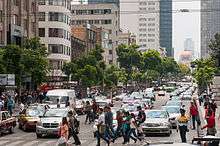
If driving in from the USA, always purchase Mexican liability insurance (legal defense coverage recommended) before crossing the border or immediately after crossing. When you are paying for your temporary import permit (for going beyond border areas), often in the same building there are several stalls selling Mexican auto insurance. Even if your American (or Canadian, etc.) insurance covers your vehicle in Mexico, it cannot (by Mexican law) cover liability (i.e. hitting something or injuring someone). You will probably spend time in a Mexican jail if you have an accident without it. And even if your own insurance does (in theory) provide liability coverage in Mexico—you'll be filing your claim from behind bars! Don't risk it, get Mexican auto insurance.
Never drive above the speed limit or run stop signs/red lights as Mexican police will use any excuse to pull over tourists and give you a ticket. In some cities you can police can not give you a ticket, but they might warn you. The fine for speeding could be as much as US$100 (M$1870), depending on the city.
As of April 2011, police across the country are cracking down on drunken driving, particularly in Mexico City, the larger cities and the beach resorts. There are random checkpoints throughout the country in which every driver has to stop and take an automated inebriation test. If you fail, you will end up in a Mexican prison. If you wouldn't drive drunk back home, don't do it in Mexico.
You will mostly find beggars and windshield cleaners in some red lights; having your windows closed at all times is especially recommendable in some areas of Mexico City. The windshield cleaners will try to clean yours: a strong and firm "no" is suggested.
Natural disasters
Natural disasters in Mexico include hurricanes and earthquakes.
Firearms
Every year a few US tourists run afoul of Mexico's strict gun laws. Bringing guns into Mexico is illegal in most circumstances, and this includes guns kept for personal protection on private boats. The Mexican authorities can and do search boats that dock in Mexican harbors or enter Mexican territorial waters, and if they find guns, the boat owner can find themselves in serious trouble. Concealed carry permits issued in the US are not valid in Mexico: if you try to cross the border with a concealed firearm, even inadvertently, you will almost certainly end up in a Mexican jail. Permits can be issued, in advance, for foreigners to bring certain types of guns into the country for what the law considers legitimate use, such as hunting (usually on an organized hunting trip) or participating in shooting sports. If you are thinking of bringing a gun into Mexico, be sure to carefully research the current legal requirements for permitting and documentation, and for transport and storage of the gun while in Mexico. Even if you obtain the necessary permit for a firearm, there are strict laws regarding ammunition.
Stay healthy
Some parts of Mexico are known for travelers' diarrhea, often called "Montezuma's Revenge" (Venganza de Moctezuma). The reason for this is not so much the spicy food but the contamination of the water supply in some of the poorer zones in Mexico. In most of the small towns that are less industrialized, only the poorest Mexicans will drink tap water. The best policy is to only drink bottled or purified water, both of which are readily available. Be sure to specify bottled water in restaurants and avoid ice (which is often not made from purified water). Just like in the USA, in most major Mexican cities the water is purified at the cities' water company. In most restaurants in these poor zones, the only water served comes from large jugs of purified water. If you get sick, visit your local clinic as soon as possible. There is medicine available that will counter the bacteria.
Medicine in urban areas is highly developed, public hospitals are just as good as public hospitals in US, and just as the American public hospitals, they are always full. It's recommended going to private hospitals for faster service.
Before traveling to rural areas of Mexico, it might be a good idea to obtain anti-malarial medications from your health care provider.
It is strongly advised that the traveler be sure that any meats they are consuming have been thoroughly cooked due to an increasing rate of roundworm infections, particularly in the Acapulco area.
Along with the risk for malaria, mosquitoes have also been known to carry the West Nile virus. Be sure to bring an effective insect repellent, preferably one that contains the ingredient DEET.
The rate of AIDS/HIV infection in Mexico is lower than in the US, France and most Latin American nations. However, if you plan on having sex, be sure that you use a latex condom to reduce your risk of contracting or spreading the virus.
As with any western location, cases of hantavirus pulmonary syndrome have been reported throughout Mexico. This is an acute, rare (but often fatal) illness for which there is no known cure. The virus is believed to be present in animal feces, particularly feces from members of the rodent family. Therefore, do not wander into animal dens and be especially careful when entering enclosed spaces that are not well ventilated and lack sunlight.
Vaccination against Hepatitis A & B and Typhoid fever is recommended.
If you are bitten by an animal, assume that the animal was carrying rabies and seek medical attention immediately for treatment.
In remote areas, carry a first aid kit, aspirin, and other related items are sold without medical prescription.
Respect
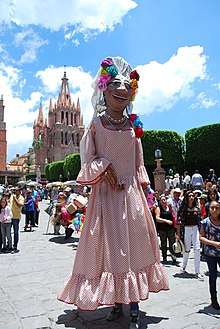
Mexicans have a somewhat relaxed sense of time so be patient. Arriving 15 minutes late is common.
When anyone, even a total stranger, sneezes, you always say "¡salud!" ("bless you!" or more literally, "your health!"): otherwise, it is considered rude. In rural areas, particularly in the Mexican heartland (Jalisco, Zacatecas, Aguascalientes, etc.), the even more pious "Jesús te bendiga" (May Jesus bless you) will follow a sneeze.
The great majority of the population is and traditionally has been Roman Catholic, and there is still a strong following of this faith among Mexicans from all socioeconomic backgrounds. However, missionary activity from the US has made for a sizable Protestant community, and even the smallest towns seem to have an Evangelical or Pentecostal church. One of the world's largest communities of Jehovah's Witnesses also resides in Mexico. Smaller communities, like Mormons and Jews also live in small concentrated areas throughout the republic. The irreligious are a small minority compared even to Mexico's Northern and some of its Southern neighbors and they are found mostly among college-educated urban dwellers of the middle and upper middle class. Saying you don't believe in God may simply be shrugged off, or could incite lengthy discussions or even attempts at proselytizing, depending on who you meet.
In many respects, Mexico is still a developing country, and attitudes towards LGBT travellers can at times be hostile. However, Mexico City and the State of Coahuila legalized same-sex marriage and the supreme court ruled that these marriages must be recognized by all states in the rest of the republic, thus tacitly making same-sex marriage legal in the whole country (provided the wedding takes place in Mexico City). Just as it is not wholly accepted in the rural United States or rural Canada, it is not accepted in rural Mexico. But within cities, there is a much more relaxed atmosphere. Southern Mexico City is the best place in terms of tolerance.
When entering churches, always take off any sunglasses, caps or hats. Wearing shorts is rarely a problem, but still wear a sweatshirt or sweater to your waist to avoid showing too much skin, which could be disrespectful in such places. However, away from the beaches, or northern areas, shorts are very rarely worn by Mexicans on the street and thus will attract more attention to you and make you stand out as a foreigner.
Respect Mexico's laws. Some foreigners feel that Mexico is a place where laws can be broken and the police bribed at all times. Corruption may be common among Mexican police and public figures, but since it is a problem that Mexican society has recognized and has been trying hard to fix, when foreign nationals behave in a manner which shows expectancy of this easy bribery, it is considered extremely disrespectful, and so it could be used as excuse for the police to give you "a respect lesson." Remember, offering a bribe to an official could get you into trouble.
Like in other countries; politics, economics and history are very delicate issues, yet in México they are also considered good conversation pieces when conversing with foreigners. Just like in Europe, Canada and the US, Mexico's democracy is vibrant and diverse, and people have a variety of opinions. As Mexico only recently became a true viable democracy, however, there is an eagerness on behalf of Mexicans to share their opinions and political ideas with you. Common sense applies like it does in your country: if you don't know enough about Mexico's political landscape, ask as many questions as you like but avoid making any strong statements.
Many US citizens (and to a lesser extent other foreigners) make careless mistakes in conversations with Mexicans. Mexicans, while strong and hardy people can be very sensitive people when it comes to their country. Avoid saying anything that will make it seem as if you think Mexico is inferior to your home country. Do not assume that because you are a US citizen, you are an immediate target for kidnapping, since the vast majority of victims are Mexicans. Do not be overly cautious, especially if you have hosts that are taking care of you and know where to go and not to go. It will just insult your host and they will assume you do not respect Mexico or that you do not trust them.
Avoid talking about Mexico's flaws. Avoid talking about illegal immigration to the US, the drug trade, or any other contentious issue; Mexicans are well aware of their country's problems and want to forget about them once a while. Instead, talk about the good things of Mexico: the food, the friendly people, the scenery. This will make you a very good friend in a country that can seem menacing to take on by yourself.
While overt racism may not be apparent, as a general rule, wealth and social status are historically tied to European ancestry and skin color. Mexican society is sharply divided by social class, with the rich, middle class, and poor often living very separate lives, and can have very distinct cultures. Social practices or tastes of one social group may not be shared by all classes. Clubs, bars, and restaurants may cater largely to one crowd or another, and a wealthier person or tourist may feel out of place or received unwanted attention in a working class cantina; a poor looking person may be blatantly refused service or get unfriendly stares at an exclusive establishment.
There are many words in the country according to ethnic background:
Do not be offended to be called a "güero(a)" (blonde) and its diminutive form "güerito(a)" (blondie), as its a common way for the average Mexican citizen to refer mostly to Caucasian people, including white Mexicans. The words "gringo" and its synonym "gabacho" are used regardless of the actual nationality of the tourists and should not they be taken as offensive nouns. Actually, they are often used as terms of endearment.
If you are East Asian, you will be referred to as "Chino(a)" (Chinese) and its diminutive form "chinito(a)" regardless of whether you are Japanese, Vietnamese, Korean, etc. Exceptions are in the capital, Mexicali, and in Monterrey, where a decent-sized Korean community does exist.
If you are black, "negro(a)" or "negrito(a)" may seem harsh, especially if you are from the US, but it is not a swear word. Although there are few black people in Mexico in many regions of the country (except in on the east and west coasts in the south), Mexicans, especially the younger generations, are not hateful. In fact, a revolutionary who later became the second president was a man of mixed European and African descent, Vicente Guerrero.
Historically, all Middle Easterners were referred to as "turcos" (even if they were from Egypt, Lebanon, Syria, etc.)
If you try to use your Spanish to address people be careful about the use of "tú" (informal, friendly, and called tutear; which is a verb, to call someone "tú") and "usted" (formal, respectful) forms. Using "tú" can be demeaning to people, since this is the form normally used for addressing children or close friends. For foreigners, the best way to deal with the "tú" and "usted" problem is to address people using "usted" until invited to say "tú", or until addressed by the first name. Doing so will look perhaps a shade old-fashioned but always respectful, while doing otherwise can be pretty rude and embarrassing in some situations. Always use the "usted" form to a law enforcement officer (or other person of authority), even if he may use the "tú" form to talk to you.
Use "usted" unless the person is genuinely your friend, the person is under 16, or the person tells you explicitly to use "tú".
People address each other depending on their social status, age and friendship. To refer to a woman always call her "señorita" (Miss) unless you are sure that she is married, then you call her "señora" (Mrs). When talking to an older man use "señor" irrespective of his marital status. If you want to call a waiter address him as "joven" which means "young man". You may call someone by his professional title ("ingeniero", "arquitecto", "doctor", "oficial", etc.). Actually, Mexican people will use the "tú" and "usted", "first name" or "surname" depending on their relationship, and the code is not easy to learn.
While the word "güey" is equivalent to "dude" or "mate" among young people, it is still considered extremely vulgar among people older than you. This abrasive term of endearment is used only between people who have achieved a certain level of trust, so avoid using it.
In Mexico "estúpido" means far, far worse than "stupid" in English.
Due to the highly matriarchal nature of Mexican culture, the combination of words "tu madre" (your mother) is cacophonous and taken offensively by residents, regardless of age or gender. If you must use it, remember to replace it with "su señora madre" at formal situations or the sweeter "tu mamá" at informal ones. Never ever use strong language when talking to a woman.
This may refer to male chauvinism, which is falling out of favor, but is still noticed and tolerated in small towns, or cities that receive considerable amounts of rural migrants. It can be defined as a male's strong desire for and skill of the domination and imposition of will, on a wife, sister, or any close female. It can also be identified by a strong desire to prove courage through showy bravado and status through a following of yesmen and henchmen. While it is usually not directed towards visitors, it can be in a variety of strengths. It is best to pretend not to notice it and move on.
Another type of machismo, which perhaps stems out of the same desires but does not carry any of the antisocial connotations, is male courteousness towards women. This is manifested in standing up when a lady enters a room, opening or holding a door, conceding preference or rights of way, giving up a seat, offering a hand when stepping down from a steep step, etc. It is generally reserved for older women, or women of great power, merit, and social stature. Rejecting these types of friendly gestures is considered arrogant or rude.
Connect
You can call from public phones using prepaid tel. cards tarjetas ladatel, bought at magazine stalls. Cards can be purchased in M$30, 50 or 100 denominations. The rate to call the US is roughly equivalent to US$0.50 per minute. Beware these are different than tarjetas amigo, viva, or unefon: they are for cellphones.
Some areas have only a few internet cafes; in others, they are plentiful. Common fees vary from M$7 to M$20 per hour. Most of the internet cafes offer calls to the US for a better rate than a payphone, usually via VoIP.
If you have an unlocked GSM phone, you can buy a prepaid SIM card in Mexico and have a local mobile phone number for use in cases of emergency. The most expensive provider Telcel provides good coverage throughout the country and you can get a SIM card for M$150 with M$75 talk time (send *133# to request available credit). Cheaper providers unfortunately may not be worth the hassle due to slow internet and unreliable connection. You can get SIM cards in many shops; however, obtaining a prepaid SIM card on a street stall may not only be cheaper and faster (no registration process) but also yield a better welcome offer rate.
It is often far cheaper than what hotels will charge you and incoming calls may also be free under certain schemes. Mexico operates on the same GSM frequency as the United States, 1900 MHz. There is an Internet wireless connection in almost every restaurant or hotel in the big cities.
If you're staying for over a week and don't have an unlocked phone, it might be a good idea to buy a cheap (less than M$200) handset and buy a prepaid card.
Go next
To Guatemala
Over Tenosique, La Palma, by boat on the river Rio San Pedro to Naranja (Guatemala). This route is not used by many and still has a touch of adventure. Stay firm when negotiating over the price. Absolutely important! Make sure you get your passport stamped before you leave Naranja or you might catch one of the rare buses back and take a walk through the jungle as the emigrations office is part up the river between the Mexican border and the village.
To the United States
The U.S. generally requires a passport for entry. A few express ID cards and trusted traveler cards are also acceptable. U.S. and Canadian citizens seeking entry or reentry by land or sea may use an Enhanced Driver License in place of a passport. U.S. permanent residents need their permanent resident card and may need the passport from their home country.
Foreign nationals entering the United States without a permanent resident stamp, including those on the Visa Waiver Program, typically receive an I-94 Arrival-Departure Record or I-94W Visa Waiver Arrival-Departure Record upon arrival in the United States. So long as the I-94 has not expired, you can use it to reenter the United States with your passport; however, if you hand it in upon exit, you will need to obtain a new card if your visa allows another entry or, if on the Visa Waiver Program, pay a fee of about US$6 to reenter the United States.
Unless you are not going to return to the United States, keep your I-94 when leaving the United States or you will have a difficult time getting back in, and if your visa is limited to a certain number of entries, you may need to use another entry.
Visa Waiver participants cannot reset the 90-day counter unless they leave the North America, so ducking into Mexico will not allow you another 90 days.
